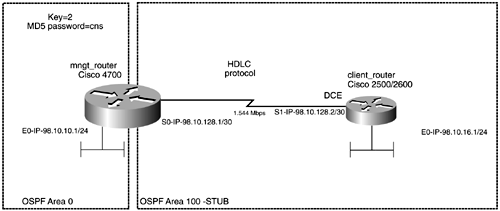Lab 34: Configuring NTP Servers, Clients, and Authentication ”Part I Practical Scenario NTP is a critical component to network management. Without a common clock, it is difficult to track and correlate any network anomalies. By having NTP configured, all the routers will be synchronized to the same clock, and troubleshooting the network will be much easier. Lab Exercise You are an engineer at management.com networks. You will be in charge of synchronizing all the routers in the network to one common clock source. Before rolling out NTP to the whole network, you will perform a proof-of-concept test with the following conditions: -
At this time, you do not have access to an NTP server, and you must find a way for the router to provide NTP service to the network. -
All routers are located in the United States “Pacific Time zone, which is an 8- hour offset from Greenwich Mean Time or UTC. Ensure that this is the time zone for the network, and use the name of PAC for a description. -
Make NTP pass secure updates. -
The remote router, client_router, should have a stratum of 6 when its clock is synchronized to the mngt_router. -
(Optional) Set up all the routers for daylight saving time. Use S-PAC for the description when in daylight saving time. Lab Objectives -
Configure the network as depicted in Figure 17-7. Use OSPF as the routing protocol, and put the client router in a stub area. Figure 17-7. Management.Com Networks: NTP Proof-of-Concept  -
Configure the management router as an NTP server and the client router as an NTP client. -
Use MD5 authentication for NTP; use cns for the password with a key of 2. -
Set the appropriate stratum level. Equipment Needed -
Two Cisco routers. The routers should be connected through V.35 back-to-back cables or in a similar manner. The routers must support NTP ”a Cisco 2500 or greater series. To model this network, we used Cisco 4700 and Cisco 2500 series routers. -
Two LAN segments, provided through hubs or switches. Physical Layout and Prestaging -
Connect the hubs and serial cables to the routers, as shown in Figure 17-7. Use HDLC as the WAN protocol. -
Connect the two Ethernet hubs to the routers to form two LAN segments, as shown in Figure 17-7. |
